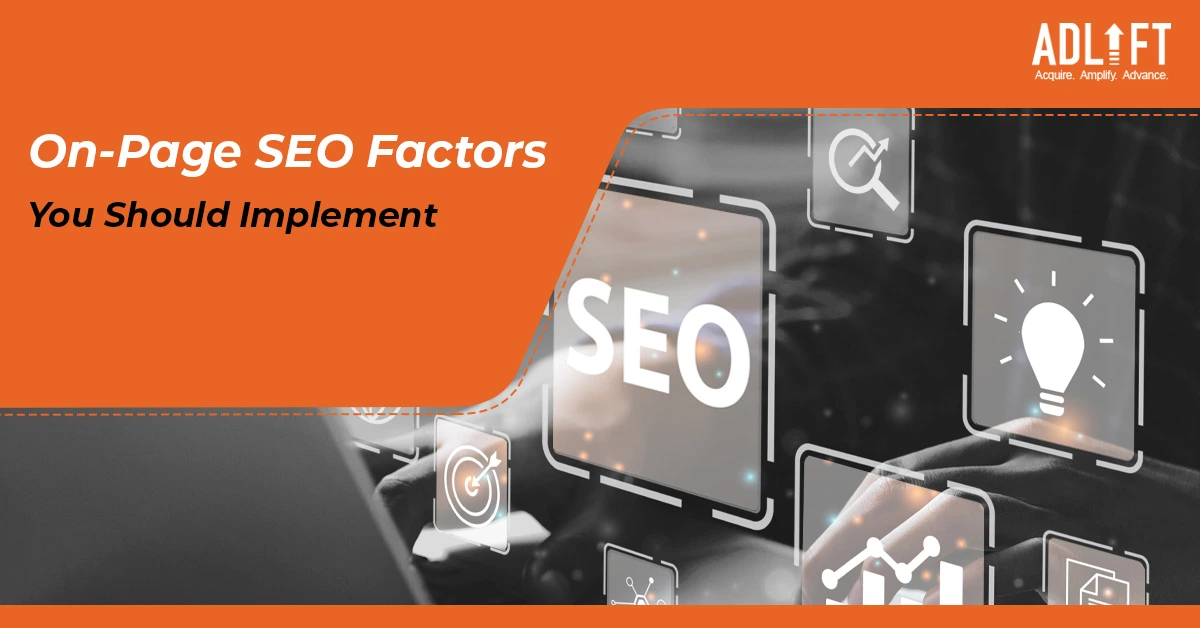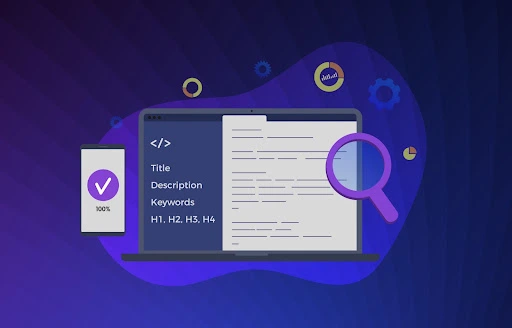8 On-Page SEO Factors You Need to Implement Today

As a website owner or digital marketer, you must be familiar with the importance of Search Engine Optimization (SEO) for your online presence. There are many factors that influence search rankings, and on-page SEO is one of them. On-page SEO refers to the optimizations that you can make on your website to improve its visibility and ranking on search engines. In this article, we will discuss 8 on-page SEO tips that you need to implement today to improve your website’s ranking.
-
Keyword Research and Optimization
The first of many on-page SEO tips is to conduct proper keyword research. You need to find the keywords that your target audience is searching for and optimize your website’s content accordingly. You can use keyword research tools such as Google Keyword Planner, Ahrefs, SEMrush, or Moz to find the right keywords for your website.
Once you have identified the right keywords, you need to optimize your website’s content by including those keywords in the page title, meta description, header tags, and content. However, make sure that you do not overuse keywords, as it can lead to keyword stuffing and harm your website’s ranking.
-
Title Tags and Meta Descriptions
Title tags and meta descriptions are HTML elements that provide information about your website to search engines and users. A good title tag and meta description can improve your website’s click-through rate (CTR) and ranking.
Make sure that your title tag is descriptive and includes your primary keyword. The title tag should not exceed 60 characters. The meta description should also be compelling and include your primary keyword. However, the meta description should not exceed 160 characters.
-
Header Tags
Header tags (H1, H2, H3, etc.) are HTML elements that structure your content and make it easier to read for users and search engines. The H1 tag is the main heading of the page and should include your primary keyword. The H2 and H3 tags can be used for subheadings and should include related keywords.
-
Content Optimization
Content is king when it comes to SEO. You need to create high-quality, engaging, and informative content that provides value to your target audience. Make sure that your content includes your primary keyword and related keywords. However, do not stuff keywords, as it can harm your website’s ranking.
You also need to optimize your content for readability by using short paragraphs, bullet points, and subheadings. Make sure that your content is easy to read and understand.
-
Internal Linking
Internal linking is the process of linking to other pages on your website. Internal linking can improve your website’s navigation, user experience, and ranking. Make sure that you include internal links in your content to other relevant pages on your website.
-
Image Optimization
Images can improve the visual appeal of your website and make it more engaging for users. However, images can also slow down your website’s loading speed, which can harm your website’s ranking. Make sure that you optimize your images by compressing them, using the right file format, and including alt tags.
-
Mobile Optimization
More than 50% of internet traffic comes from mobile devices, which means that your website needs to be mobile-friendly. Make sure that your website is responsive and optimized for mobile devices. You can use Google’s Mobile-Friendly Test tool to check if your website is mobile-friendly.
-
Page Speed
Page speed is a critical factor in SEO as it can affect your website’s ranking and user experience. You need to make sure that your website loads quickly and does not have any technical issues that can slow it down. You can use tools such as Google PageSpeed Insights, GTmetrix, or Pingdom to check your website’s speed and identify any issues that could be leading to slow page loading speed.
In conclusion, implementing these on-page SEO tips can help improve your website’s search rankings and drive more traffic to your site. By optimizing your page titles, meta descriptions, URLs, and images, you can make it easier for search engines to understand what your page is about and rank it accordingly. Additionally, by improving your page speed, using internal linking, and optimizing your content, you can create a better user experience and keep visitors on your site for longer.
Remember, on-page SEO is just one piece of the puzzle when it comes to improving your website’s search rankings, but it’s an important one. By following these best practices and continuing to create high-quality, relevant content, you can improve your website’s visibility and attract more visitors to your site.
FAQs
Ans: To optimize your website’s title tags meta descriptions, you must follow these steps:
- Keep them concise and relevant.
- Make sure to include important keywords in your title tags.
- Craft compelling descriptions while encouraging clicks, using a call-to-action.
Ans: You can optimize your content by focusing on originality. Our advice is to use relevant keywords, create engaging content, carefully organize it with headings and subheadings to ensure readability.
Ans: You can optimize images on your website by using descriptive filenames and alt text to describe images for SEO. Secondly, you also compress images to reduce file size, toi ensure shorter loading times.
Ans: To optimize header tags, structure content logically with H1 for the main title, followed by H2, H3, and so on for subheadings. Use keywords where appropriate to guide search engines and readers through content.
Ans: Improve loading speed by optimizing images, minimizing CSS and JavaScript, utilizing browser caching, using Content Delivery Networks (CDNs), and choosing a reliable hosting provider.
Ans: Optimize for mobile by using responsive design, ensuring mobile-friendly fonts and buttons, optimizing images for mobile, and testing your site on various mobile devices.
Ans: Optimize for mobile by using responsive design, ensuring mobile-friendly fonts and buttons, optimizing images for mobile, and testing your site on various mobile devices.
Ans: Keyword research helps you identify relevant keywords with search volume and competition. Incorporate these keywords naturally into your content, title tags, and meta descriptions for better on-page SEO.
Ans: Avoid keyword stuffing, poor-quality content, irrelevant keywords, duplicate content, and neglecting technical SEO aspects like proper URL structure, canonicalization, and proper redirects. Also, ensure your site is mobile-friendly and has a good user experience.
Categories
Recent Posts
- Boost Your Website’s Visibility with These Must-have B2B SEO Tools January 13, 2025
- Master Your Digital Strategy: Learn the 7 Types of SEO That Lead to High Rankings January 13, 2025
- 2024: A Year to Remember at AdLift! January 7, 2025
- How to integrate your SEO and paid search strategies to maximize efficiency and reduce CAC January 6, 2025
- SEO in 2025: Adapting to a Changing Search Landscape By Prashant Puri, CEO & Co-Founder, AdLift January 3, 2025
- Understanding the Google December 2024 Spam Update: What You Need to Know December 31, 2024
- Beware of Ongoing Scams Involving Fake AdLift Representatives December 31, 2024
- Facebook vs Twitter: Which Platform Wins for Your Marketing Goals? December 30, 2024
- The Art of Naming Conventions in Marketing Campaigns: Best Practices for Clarity and Success December 26, 2024
- Is Your Content Strategy Working for You — or Against You? December 19, 2024
Get
in Touch
Contact AdLift for a 360-degree marketing plan

